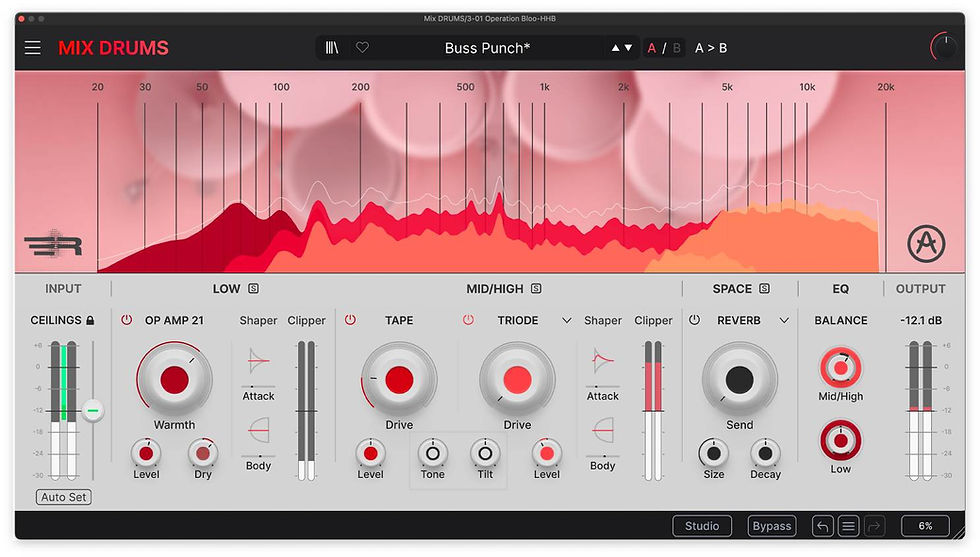Metallica Sound System: Inside the M72 Tour Audio Beast that save Tomorrowland 2025
- René Delacroix
- Jul 20
- 3 min read
Updated: Oct 28

In 2025, Metallica's cutting-edge sound system made headlines not just for its power on tour — but for saving one of the biggest electronic music festivals in the world. After a devastating fire destroyed the main PA system at Belgium’s Tomorrowland, organizers turned to Metallica’s M72 World Tour rig as a last-minute replacement. Yes — a metal band’s audio gear replaced a full EDM stage. And it worked. Perfectly.
But what makes Metallica’s system so unique that it could cover both stadium metal and festival electronic music with crystal clarity? Let’s break it down.
A Stadium-Sized PA with Club-Level Precision
The M72 World Tour’s mission was clear: studio-quality sound in every stadium seat. To achieve this, Metallica partnered with Meyer Sound to design one of the most ambitious mobile audio setups in live music history.
288 Meyer Sound PANTHER line-array loudspeakers, distributed in three rings around the crowd, deliver full-range audio from every angle.
Subwoofers include 96 2100‑LFCs, 48 VLFCs, and 16 1100‑LFCs, carefully placed to create a uniform low-end experience across an entire venue.
It’s not just about volume — it’s about clarity, punch, and even coverage. The PA is designed so that even fans in the nosebleeds feel like they’re in the front row.

A Redundant and Intelligent System
Behind the scenes, 35+ GALAXY network processors run the entire soundscape via triple-redundant AVB networks, offering rock-solid reliability — key for stadiums and for impromptu rescues like the one at Tomorrowland.
And for the fans in the center ring — the famous Snake Pit — compact ULTRA‑X40 and UPQ‑D2 units fill in the details. It’s immersive sound at every distance.
The Band’s Sound: Vintage Tone, Modern Tech
You won’t find walls of old-school tube amps behind James Hetfield anymore. Instead, Metallica rely on:
Fractal Audio Axe‑Fx III units for modeling vintage amp tones (including the famed Mesa/Boogie Mark IIC+ crunch).
Digital signal routing with RJM switching systems, and powerful Shure wireless tech.
A mix of real guitar cabs on stage — not for the audience, but to give the band that “real amp feel” while the FOH engineer controls the actual sound.
From Thrash to Trance: How It Saved Tomorrowland
In July 2025, Tomorrowland’s main stage suffered a technical catastrophe when its main audio system was damaged by an electrical fire. With the festival’s kickoff imminent, organizers contacted Meyer Sound, who had just wrapped up a leg of Metallica’s tour in Europe.
Within 48 hours, the entire Metallica rig was reconfigured and installed in Boom, Belgium, delivering flawless coverage for artists like Armin Van Buuren, Alesso, and Charlotte de Witte — none of whom had ever performed on a system designed for thrash metal.
The result? Crystal-clear sound, thunderous bass, and no one in the crowd ever knew the difference.
The Takeaway
Feature | Detail |
Speaker Power | 288 PANTHER line arrays, in 3 concentric rings |
Bass Depth | Over 150 sub units (2100-LFC, 1100-LFC, VLFC) |
Tech Control | 35+ GALAXY processors, triple Milan/AVB network |
Guitar Tone | Fractal Audio modeling + physical cabs for stage feel |
Backup Use | Deployed at Tomorrowland 2025 after fire damaged their PA |
Final Thoughts
Metallica didn’t just build a sound system for a metal tour — they created a multi-genre, stadium-filling sonic machine. One so adaptable and powerful, it could seamlessly shift from “Enter Sandman” to “Levels” by Avicii without skipping a beat.
For artists, engineers, and fans alike, the M72 tour proves that the future of live sound is flexible, immersive, and built to survive — even fire.
REMEMBER
By purchasing through our affiliate link, you allow us to earn a small percentage, at no additional cost to you. And you help the blog survive.







Comments